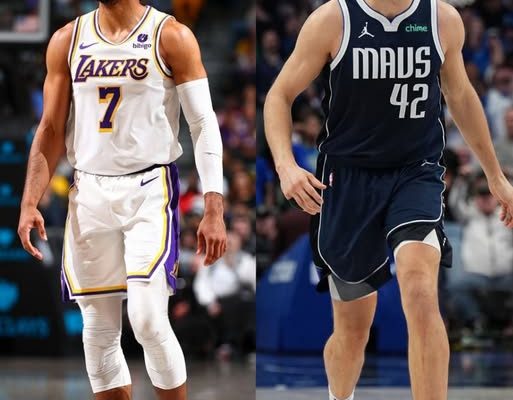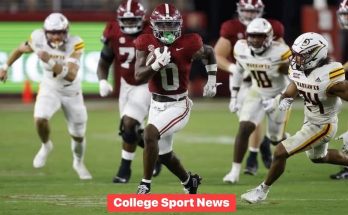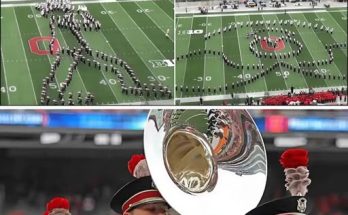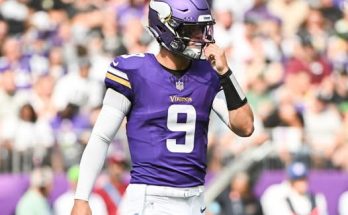The Los Angeles Lakers find themselves at yet another crossroads in what has been a hectic, transformative offseason that has stirred up more questions than answers. According to a report by Brett Siegel, the Lakers have quietly explored trade possibilities involving guard Gabe Vincent and forward/center Maxi Kleber in the past 24 hours. While this might not seem like earth-shattering news on the surface, what makes it intriguing is the underlying motivation behind such discussions and the subtle signals it sends about the Lakers’ strategy and standing heading into the 2025-26 NBA season. However, these trade discussions reportedly never advanced past the preliminary stages, as opposing teams demanded a draft pick be attached in return. For Lakers fans and NBA observers, this latest attempt at roster reshuffling warrants deeper analysis.
At the heart of this development lies a truth every NBA general manager knows well: managing a salary cap in a star-driven league is like playing high-stakes chess, not checkers. The Lakers, perennially in the spotlight and always one step away from contention or collapse, know this better than most. The pursuit of flexibility, both financial and on the court, has taken center stage for the purple and gold this offseason. And given that Gabe Vincent and Maxi Kleber have become names floated in trade talks, it’s essential to understand why the Lakers are testing the waters and what the implications are moving forward.
Start with Gabe Vincent. Once a Miami Heat playoff hero, Vincent was signed by the Lakers in the summer of 2023 on a three-year, \$33 million deal. At the time, it was viewed as a low-risk, high-upside move. Vincent had proven himself as a tough, heady guard during Miami’s unexpected Finals run, and his two-way skills suggested he could thrive as a steady hand behind—or even alongside—D’Angelo Russell. But things have not panned out in Los Angeles. Injuries plagued his first season, and when he did play, Vincent never found a rhythm. He shot poorly, turned the ball over too frequently, and couldn’t replicate the same defensive intensity he had shown in South Beach. By the time the 2024 playoffs rolled around, Vincent was an afterthought in the rotation, and it became increasingly clear the Lakers had a redundancy at the guard spot.
Then there’s Maxi Kleber, who came over in a deal involving the Dallas Mavericks earlier this offseason in a broader effort to retool the frontcourt. A skilled stretch big with defensive awareness, Kleber has long been a respected role player. But injuries and declining athleticism have begun to affect his impact. Still, his contract—just over \$11 million annually—is non-guaranteed beyond the current season, which makes him a potentially valuable asset from a cap management standpoint. Yet, even with his useful traits, Kleber has not solidified a role that makes him indispensable to the Lakers’ long-term plan. That lack of certainty around his production, paired with his middling salary, makes him ripe for trade scenarios—especially if L.A. is angling to free up space.
Which brings us to the crucial question: why are the Lakers trying to move these pieces now? The answer likely revolves around two key factors—cap space and future trade positioning. Despite what some might believe, the Lakers are not flush with cap room. With LeBron James opting into the final year of his contract, D’Angelo Russell still on the books, and Anthony Davis under a long-term deal, the Lakers are pressed tight against the salary cap and could easily move into luxury tax territory. Every dollar counts when building around aging superstars, and shedding Vincent’s or Kleber’s contracts could free up room to chase another impact player.
But it’s not just about raw cap savings—it’s about maneuverability. The Lakers want to retain the ability to act quickly if a star becomes available. Whether that’s Donovan Mitchell, Brandon Ingram, or even someone currently off the radar, the Lakers have always preferred to keep one foot in the door of every big-name chase. That flexibility becomes severely limited if they’re burdened by mid-tier contracts that aren’t delivering returns on the court. By offloading Vincent and Kleber, the Lakers might have hoped to open up roster spots or create trade exceptions that can be used later. Yet, teams around the league were unwilling to do L.A. any favors.
This is the crux of the report from Brett Siegel: opposing teams were only willing to entertain the Lakers’ offer if it came with sweeteners—namely, draft picks. That’s not a shocking stance. NBA front offices have become more disciplined and less willing to absorb contracts for nothing. Gabe Vincent is not a negative asset per se, but he certainly isn’t neutral in his current form. After a disappointing season, he’s viewed as someone with more downside than upside unless he drastically turns things around. Similarly, Kleber’s value is limited due to health and age concerns. For teams to take on that kind of risk, especially midseason or in the heart of an offseason when roster decisions are being finalized, there has to be an incentive. That’s where picks come in.
Unfortunately for the Lakers, they are not exactly brimming with draft capital. They still owe picks from past trades and have been extremely protective of the few they do control, especially their 2030 first-rounder, which has been treated like a golden ticket in league circles. L.A. understands that once LeBron retires or moves on, those picks could become premium lottery assets. So naturally, they’re not throwing in picks just to dump players, even marginal ones. This is why the trade talks with other teams stalled quickly. There was interest—but only at the right price, and that price included draft compensation.
This scenario underscores a tension that has defined the Rob Pelinka era: the battle between short-term ambition and long-term prudence. On one hand, the Lakers want to be competitive every year with LeBron James still playing at an elite level. On the other hand, they must prepare for the inevitable post-LeBron future, and that requires assets. It’s a delicate balance that few front offices have to walk with such public scrutiny. The Lakers aren’t just a basketball team—they’re a brand, a global business, a legacy. Every decision they make is amplified. That’s why even minor trade chatter about role players like Vincent and Kleber generates buzz. Fans know that these moves aren’t isolated—they’re stepping stones toward bigger shifts.
The idea of freeing up cap space through these trades could also suggest that the Lakers are eyeing a bigger fish. With the Damian Lillard and Giannis Antetokounmpo trade sagas from past seasons fresh in everyone’s minds, teams are always anticipating who might be the next star to ask out. If the Lakers are even moderately successful in clearing salary, they’d be better positioned to cobble together salary-matching packages down the line. They’re already loaded with mid-level salaries and young players like Dalton Knecht and Jalen Hood-Schifino—who could theoretically be part of future deals. But until they clear out contracts like Vincent’s, those deals remain difficult to construct under the league’s new financial rules, including the second apron penalties.
There’s also the intangible cost to consider. Every time a player’s name enters the trade rumor mill, it affects morale and trust. Gabe Vincent, though professional, surely hears the whispers. Maxi Kleber, new to the organization, may wonder where he stands. Continuity has been a buzzword for the Lakers in recent years, especially after their 2023 Western Conference Finals run was attributed partly to better chemistry and defined roles. But continuity is hard to maintain when roster churn becomes an annual tradition. These trade talks, even if preliminary, suggest that no one outside the big two—LeBron and AD—is safe.
Still, it’s worth noting that these trade discussions did not evolve into anything serious. That fact alone speaks volumes. The Lakers have ideas, but execution is another matter entirely. The market isn’t biting, and that’s a reality check for a franchise that has often gotten its way. Teams no longer jump at the chance to do business with the Lakers unless it benefits them outright. And with the new Collective Bargaining Agreement further tightening the rules on roster building and salary stacking, it’s not easy to swing deals without draft picks or young stars. The Lakers have some, but they are not throwing them in just to clear the books.
There may be other motivations at play as well. By floating names like Vincent and Kleber now, the Lakers could be gauging the market more broadly. It’s not always about making a move immediately. Sometimes, it’s about laying the groundwork for future talks. If another team gets desperate down the line, these preliminary discussions can quickly evolve into real negotiations. It’s a chess move—early positioning that could lead to something more impactful later in the season or at the trade deadline.
Meanwhile, from a fan perspective, the takeaway is mixed. On one hand, the Lakers are being proactive. They recognize that changes are needed, and they’re willing to shake things up. On the other hand, the lack of traction suggests that the rest of the league isn’t impressed by what L.A. is offering. That can be frustrating for fans who expect the team to always be in the mix for major upgrades. But it’s also a reality check about the cost of previous moves and the limitations of a top-heavy roster.
Looking ahead, it’s unlikely this will be the last we hear of Gabe Vincent and Maxi Kleber in trade discussions. If anything, this initial report is a teaser for what could be a busier trade season than expected. The Lakers will keep exploring. That’s what a good front office does—keeps lines open, gauges interest, waits for the right opportunity. But it also shows that L.A. might have to come to terms with the fact that moving on from underperforming players won’t be easy or cheap. The days of other teams doing favors for the Lakers may be over.
In the broader NBA landscape, this situation also reflects the ongoing power shift in trade dynamics. Role players making \$10-12 million per year used to be considered desirable filler. Now, they’re viewed with skepticism unless they bring elite value on the court. Front offices have grown more intelligent, more calculated. And the Lakers, for all their glitz and glamour, must adapt or be left behind.
Ultimately, this report by Brett Siegel is more than just a blip—it’s a window into the Lakers’ current state. They’re not panicking, but they’re clearly searching. They’re trying to free up space, maneuver for optionality, and perhaps prepare for a bigger swing. But for now, they remain stuck at the drawing board, limited by contracts that no longer inspire interest without sweeteners. That’s the tough reality of NBA business, especially when the margins between title contention and mediocrity are so razor-thin.
As the offseason progresses, watch for whether the Lakers revisit these talks or pivot in a new direction. The trade deadline, buyout market, and emerging star drama all loom on the horizon. The Lakers will have to be patient but persistent. They have LeBron James for what could be his final season in L.A., and they cannot afford to squander it. Whether Vincent and Kleber are part of that journey remains to be seen. But what’s certain is that the Lakers are looking for ways to build a better version of this roster—and they’re willing to test every angle to make it happen.



